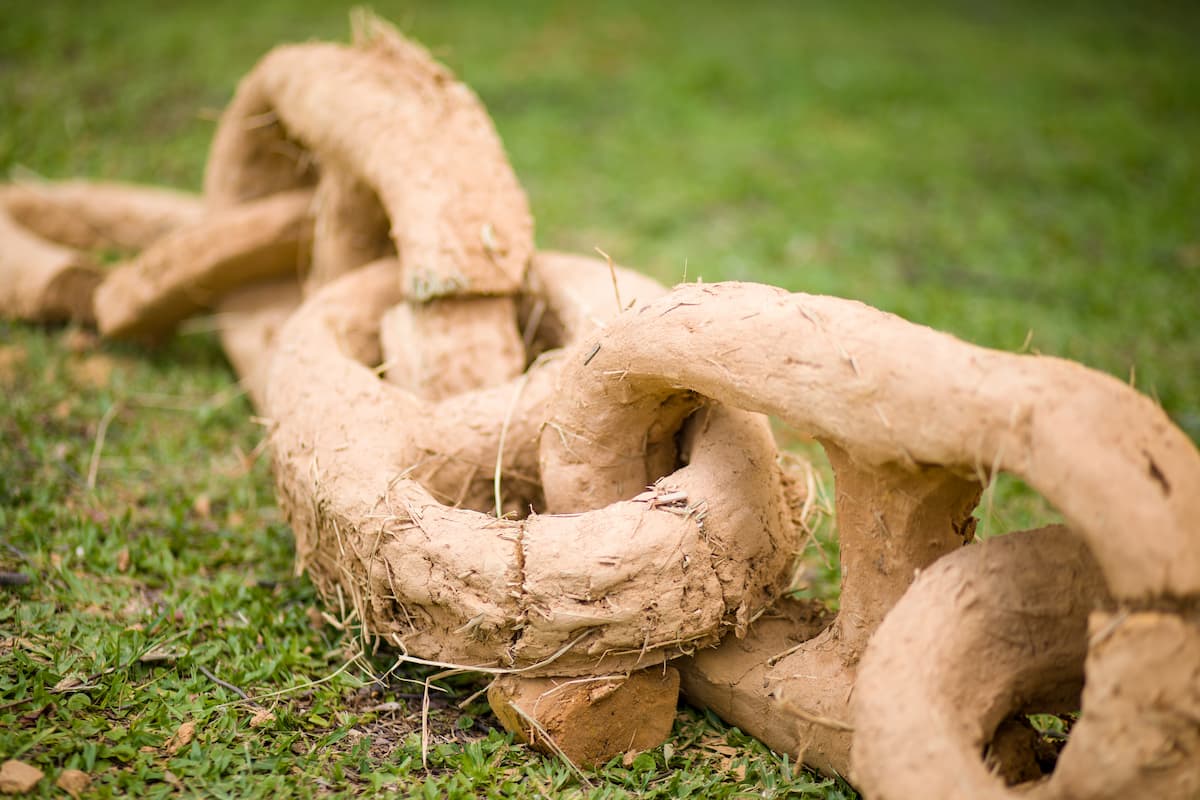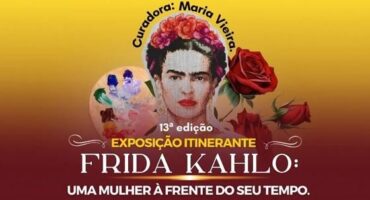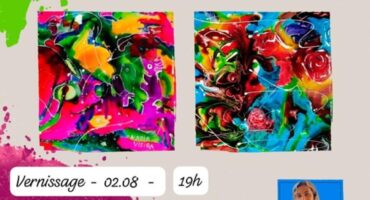The ephemeral work entitled big cobra will have the shape of a chain of deforestation, tool used in forest clearing in the Amazon territory, and will go around the Garden in front of the museum
The Museum of Modern Art of São Paulo – MAM São Paulo – features from 10 from december a new artwork in your Sculpture Garden, located in Ibirapuera Park. Signed by the artist Frederick Philippi, the site specific big cobra (2022) it will be a temporary work, ephemeral, in view of its composition, which makes it subject to day-to-day conditions. The initiative is part of the commemorations of the 30 years of the MAM Sculpture Garden, to be completed in 2023.
Born in San Carlos, Interior of São Paulo, Filippi now lives and works in São Paulo, and in the last six years he has been focusing on issues of the frontier between the forest and the advancement of industry. big cobra it is a work that is part of a series he has been developing on deforestation devices. “My artistic research began in relation to the friction between matrices of different civilizations after the invasion of America and over time I became interested in this place located in the middle of that continent., and that is a place of contention, which produces much covetousness”, he comments.
Since 2016, the artist works on community building projects in the amazon region and southeastern Brazil. This proximity to the territory led his research towards studies on this “deforestation frontier”, as he calls.
In previous works developed from this same place, Frederico brought reflections on the tools used in the deforestation process, like machetes, chainsaw chains and machinery parts. The work in the MAM Sculpture Garden will be shaped like a large chain, device used as an ostensive deforestation technique in the woods.big cobra it will be a life-size replica of this chain that connects to two tractors at its ends, putting the vegetation down quickly and abruptly.
the big chain, which will occupy a large space in the garden created by Burle Marx in front of the museum, will be made of adobe, material widely used in bioconstruction – a traditional clay building technique as, for example, the wattle and daub – and will be accommodated in an arch shape between trees in the external area of the museum.
Composed of clay and vegetable fibers, adobe is a material with low environmental impact. Each one of 180 chain links will be molded from this mixture. The pieces, although, will not go through the usual burning process, it will only dry in sunlight, getting an imagery aspect very similar to oxidized iron. for not being burned, the material must fall apart due to natural and everyday factors, like the rain and the winds.
The artist points out that “the opposition of natural and industrial elements (snake/chain, clay/steel) constitutes the concept of threat and later deposition”. According to Frederick, exists, therefore, a contrast that is also revealed in the public's perception of the work, which a priori can be shown to be made of a material (oxidized iron) and when looked at more closely, something else is shown (adobe). “These discrepancies on subjects are also very important for work”, says the artist.
“Frederico Filippi's work, from the clay, matter taken from the earth and which will return to it, allows us to reflect on the perverse deforestation techniques currently practiced. At the critical moment in which planet Earth finds itself, from the perspective of the environmental crisis, the work contributes to drawing attention to an urgent issue that is fundamental for the maintenance of biodiversity and life in general”, reflects Cauê Alves, chief curator of MAM São Paulo.
About the MAM Sculpture Garden
In 1993, the Museum of Modern Art of São Paulo inaugurated the Sculpture Garden with works from its collection and from the São Paulo City Hall. The initiative created a unique and diverse space for the city, already used to works of art in public spaces, more than, now, received an open air exhibition in the most visited park in the country. The Sculpture Garden marks an initiative that revived the MAM collection in its own space, free and with a large number of people – a path that completes 30 years in 2023.
The landscaping project was commissioned for the office of the iconic landscape architect Burle Marx. To the MAM Garden, Burle Marx created his own logic for the arrangement of artistic volumes with modern characteristics, and combined the landscape, the volumes of the works and the intervals in a fruition laden with an apparent informality of the curves, approaching the architecture of Oscar Niemeyer around you, particularly in the marquee and in Oca.
The works form a heterogeneous group, that shows in an asymmetrical way an important cut of the three-dimensional production of Brazilian contemporary art, centered on the second half of the 20th century. Largely, this stems from its own conformation history, since some of the works were the legacy of several biennials and others were added as MAM was able to intervene in the space. Thus, for example, upcoming works like exu cool jeep, from Mario Carnation, that participated in the V Bienal de São Paulo – integrating the Bahia pavilion by Lina Bo Bardi –, with steel work José Resende, donated to MAM by Itaú Cultural, that winds through space. In another similar situation, there is the granite sculpture by Lélio Coluccini, The Huntress, belonging to the city of São Paulo, close to works loaded with a constructive rationality, such as the sculptures by Amilcar de Castro and Franz Weissman.
The diversity of origins and productions give the Garden an individualized relevance in the Park’s landscape, that mobilized MAM several times over these 30 years. Changes were made to the set of works displayed, temporary exhibitions eventually took place, major restorations and lighting design, in addition to the perennial performance of mam's Educativo in this space.
Sign up to receive Event News
and the Universe of Arts first!
More information about the set of 30 Garden works are available at museum website.
About MAM São Paulo
Founded in 1948, the Museum of Modern Art of São Paulo is a civil society of public interest, nonprofit. Its collection has more than 5 thousand works produced by the most representative names of modern and contemporary art, mainly Brazilian. Both the collection and the exhibitions privilege experimentalism, opening up to the plurality of world artistic production and the diversity of interests of contemporary societies.
The Museum maintains a wide range of activities that include courses, seminars, lectures, performances, musical shows, video sessions and artistic practices. The content of the exhibitions and activities is accessible to all audiences through guided tours in pounds, audio description of works and video guides in Libras. the collection of books, newspapers, documents and audiovisual material is formed by 65 1000 titles. The exchange with museum libraries in several countries keeps the collection alive.
Located in Ibirapuera Park, the most important green area in São Paulo, the MAM building was adapted by Lina Bo Bardi and has, beyond the exhibition halls, with studio, Library, Auditorium, restaurant and a shop where visitors find designer products, art books and a line of MAM-branded objects. The Museum spaces are visually integrated with the Sculpture Garden, designed by Roberto Burle Marx to house works from the collection. All facilities are accessible to visitors with special needs.

Service
Inauguration of the work big cobra, by Frederico Filippi
Local: Sculpture Garden at the Museum of Modern Art in São Paulo
Opening: 10 of december, Saturday, from 11:0
Tickets: Free at the MAM Sculpture Garden
Address: Ibirapuera park (Av. Pedro Álvares Cabral, s/nº – gates 1 and 3)
Timetables: Tuesday to Sunday, das 10h às 18h (with last admission at 5:30 pm)
Phone: (11) 5085-1300
Access for people with disabilities
restaurant/cafe
Air-conditioning
www.mam.org.br/MAMoficial
www.instagram.com/MAMoficial
www.twitter.com/MAMoficial
www.facebook.com/MAMoficial
www.youtube.com/MAMoficial



